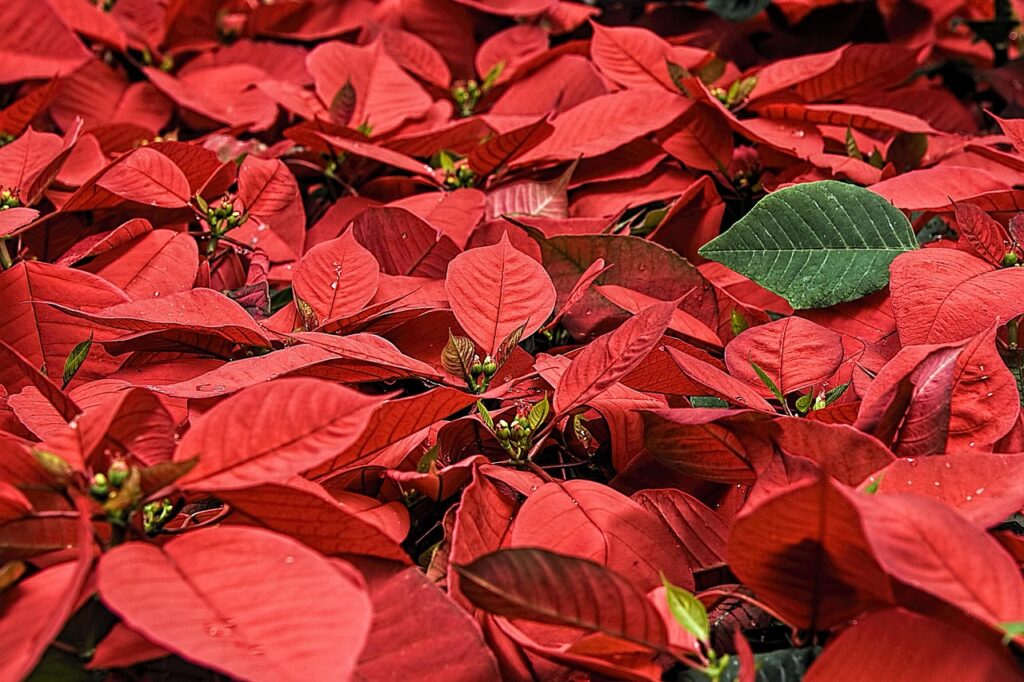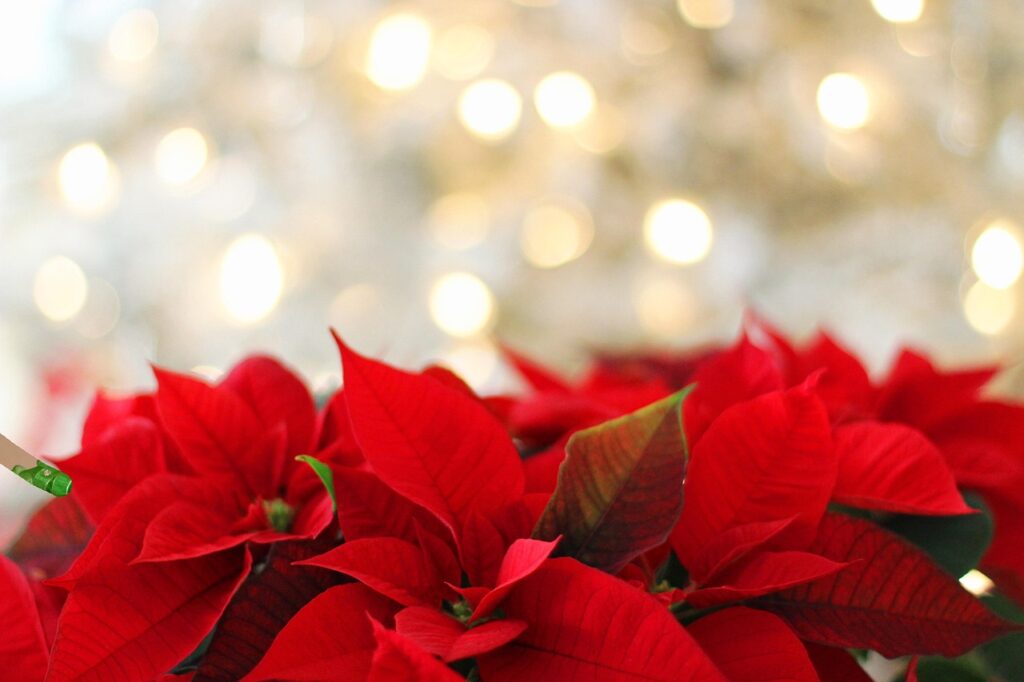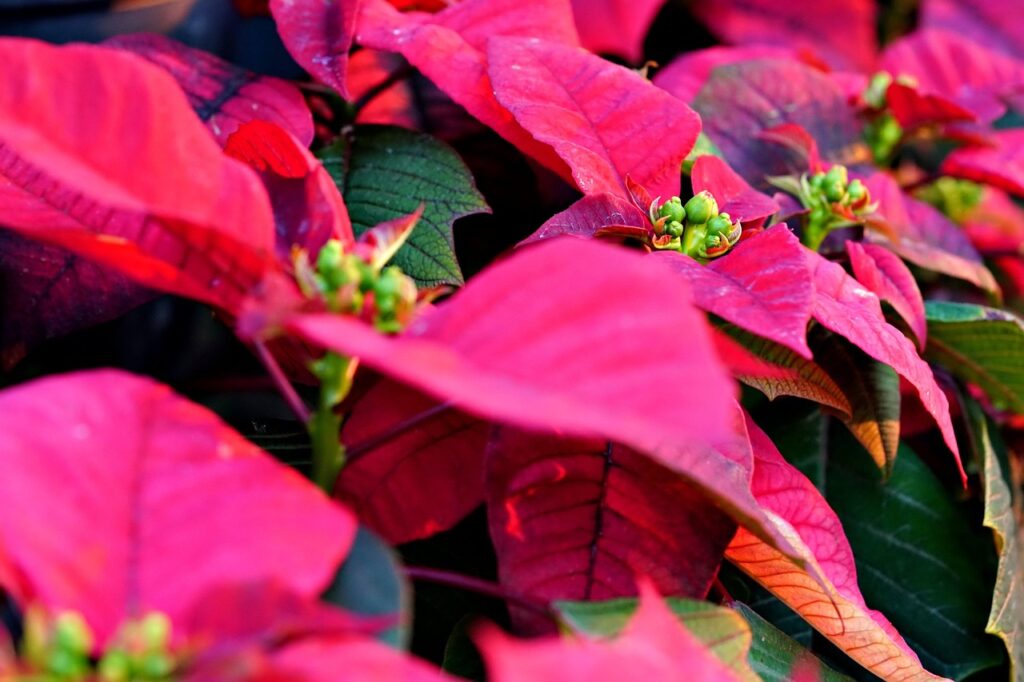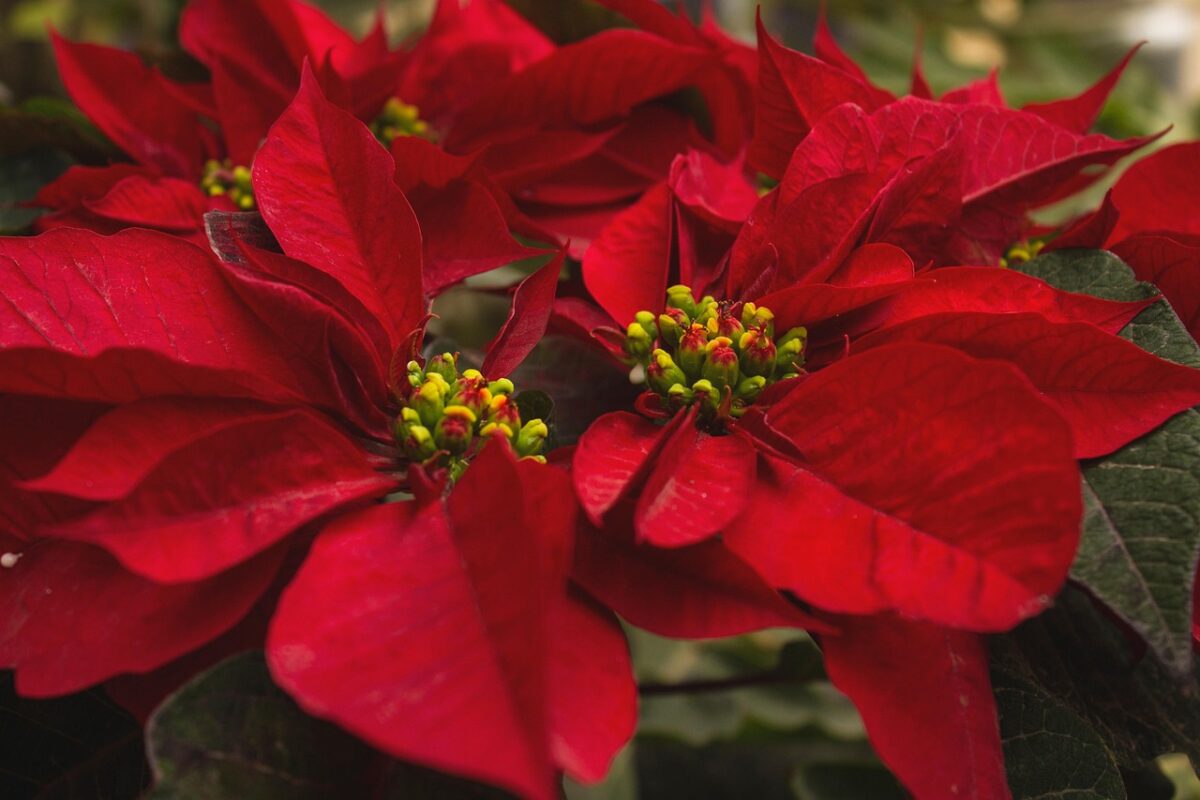Poinsettias are often associated with indoor holiday decor, but with the right care, they can thrive outdoors as well. This guide provides practical advice on how to care for poinsettias outside, ensuring your plants flourish in their natural environment. From selecting the right location to seasonal maintenance, you’ll learn everything you need to know about growing poinsettias outdoors.
Poinsettias (Euphorbia pulcherrima) are native to Mexico and thrive in warm climates. They can survive outdoors in USDA hardiness zones 9 to 11, where temperatures do not typically drop below 20°F (-6°C). In cooler climates, poinsettias can be grown as annuals or moved indoors during the colder months.
Climate Requirements and Hardiness Zones
Hardiness Zones: Ideal for zones 9-11.
Temperature Tolerance: Best suited for temperatures between 60°F to 70°F (15°C to 21°C).
Frost Sensitivity: Protect from temperatures below 20°F (-6°C).
Choosing the Right Outdoor Location

Selecting the right spot for your poinsettias is crucial for their health and growth.
Sunlight Needs
Full Sun: Poinsettias require at least 6 hours of direct sunlight daily.
Partial Shade: In extremely hot climates, some afternoon shade can prevent leaf scorch.
Soil Conditions
Well-Draining Soil: Use a mix that allows excess water to drain easily.
pH Level: Aim for a slightly acidic to neutral pH (6.0-7.0).
Planting Poinsettias Outside: Step-by-Step
Follow these steps for successful planting:
Step 1: Prepare the Soil
Clear the Area: Remove weeds and debris.
Amend the Soil: Mix in organic matter, such as compost, to improve nutrient content.
Step 2: Digging the Hole
Hole Size: Dig a hole twice the size of the root ball.
Depth: Ensure the top of the root ball is level with the surrounding soil.
Step 3: Planting
Position the Plant: Place the poinsettia in the hole, ensuring it is upright.
Backfill: Gently fill with soil, pressing lightly to eliminate air pockets.
Step 4: Watering After Planting
Initial Watering: Water thoroughly after planting to settle the soil.
Mulch: Add a layer of mulch to retain moisture and suppress weeds.
Watering and Fertilizing Outdoor Poinsettias
Proper watering and fertilization are essential for healthy growth.
Watering Schedule
Frequency: Water when the top inch of soil feels dry.
Method: Water deeply to encourage root growth.
Fertilizing Tips
Type of Fertilizer: Use a balanced, water-soluble fertilizer (e.g., 20-20-20).
Schedule: Fertilize every 4-6 weeks during the growing season (spring and summer).
Sunlight and Temperature Requirements

Understanding the light and temperature needs of your poinsettias will promote vigorous growth.
Sunlight Exposure
Optimal Conditions: Full sun is ideal, but monitor for signs of leaf burn.
Adjustments: If leaves turn yellow or drop, consider moving to a shadier location.
Temperature Management
Heat Protection: In extreme heat, provide shade during the hottest parts of the day.
Cold Protection: Bring potted plants indoors if temperatures drop below 20°F (-6°C).
Protecting Poinsettias from Pests and Diseases
Outdoor plants are susceptible to various pests and diseases, but preventive measures can help.
Pest Prevention
Common Pests: Aphids, whiteflies, and spider mites.
Control Measures: Use insecticidal soap or neem oil for treatment.
Disease Management
Fungal Issues: Root rot can occur from overwatering.
Prevention Tips: Ensure good drainage and avoid wetting the foliage during watering.
Seasonal Care: Year-Round Maintenance
Maintaining your poinsettias throughout the year ensures they remain healthy and vibrant.
Spring and Summer Care
Regular Watering: Keep the soil consistently moist but not soggy.
Fertilization: Continue feeding every 4-6 weeks.
Fall Preparation
Temperature Monitoring: Begin monitoring nighttime temperatures.
Indoor Transition: If necessary, prepare to move plants indoors before the first frost.
Winter Care
Indoor Conditions: If moved indoors, place in bright, indirect light.
Watering Schedule: Reduce watering frequency in winter, allowing the soil to dry out slightly.
Common Outdoor Poinsettia Problems and Solutions

Identifying and addressing issues early can save your plants.
Leaf Drop
Cause: Often due to stress from temperature changes or overwatering.
Solution: Ensure consistent care and avoid sudden environmental changes.
Yellowing Leaves
Cause: Typically a sign of overwatering or nutrient deficiency.
Solution: Adjust watering habits and consider fertilization if needed.
Wilting Plants
Cause: Can be due to underwatering or root rot.
Solution: Check soil moisture levels; if too dry, water thoroughly; if too wet, improve drainage.
Poinsettias can be a delightful addition to your outdoor garden, but understanding their specific needs is essential for success.
If you live in a suitable climate (zones 9-11), you can keep them outside year-round. In cooler climates, they should be brought indoors during winter.
Water when the top inch of soil feels dry, typically every few days, depending on weather conditions.
Yes, common pests include aphids, whiteflies, and spider mites. Regularly inspect your plants and use preventive measures as needed.
